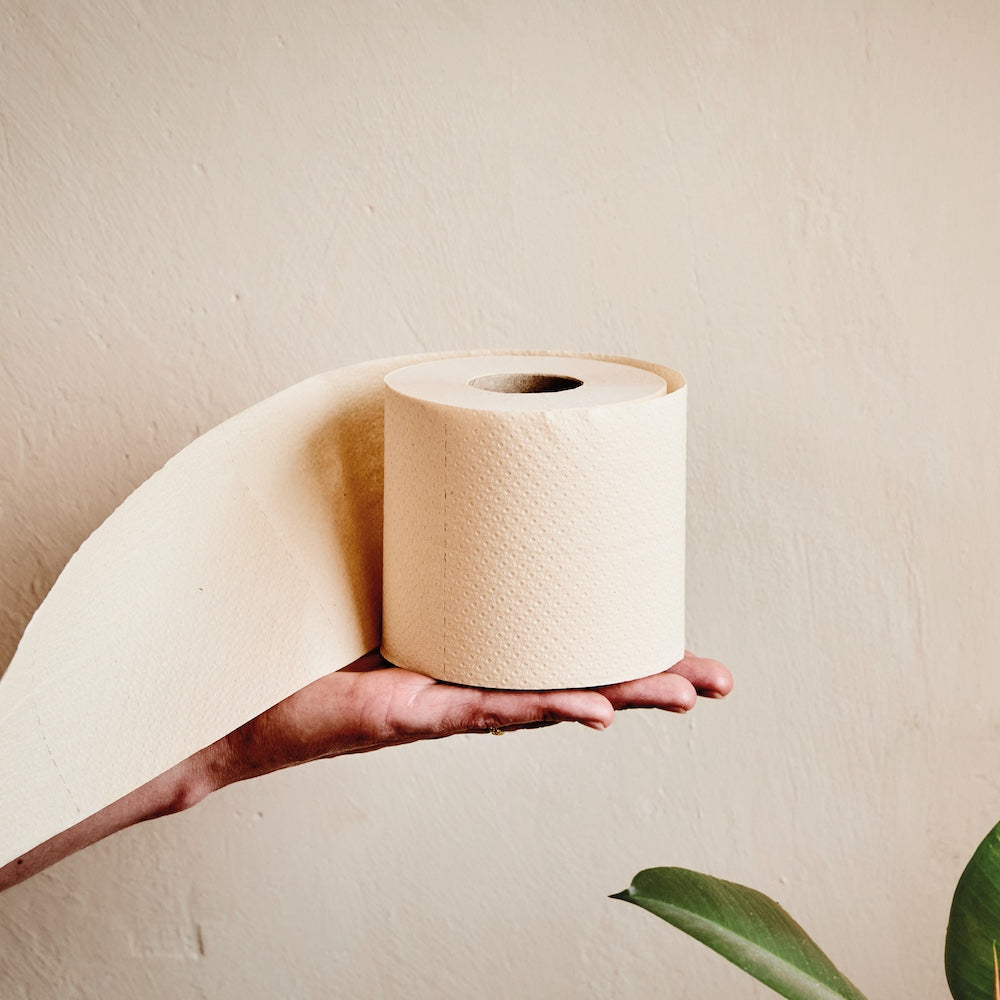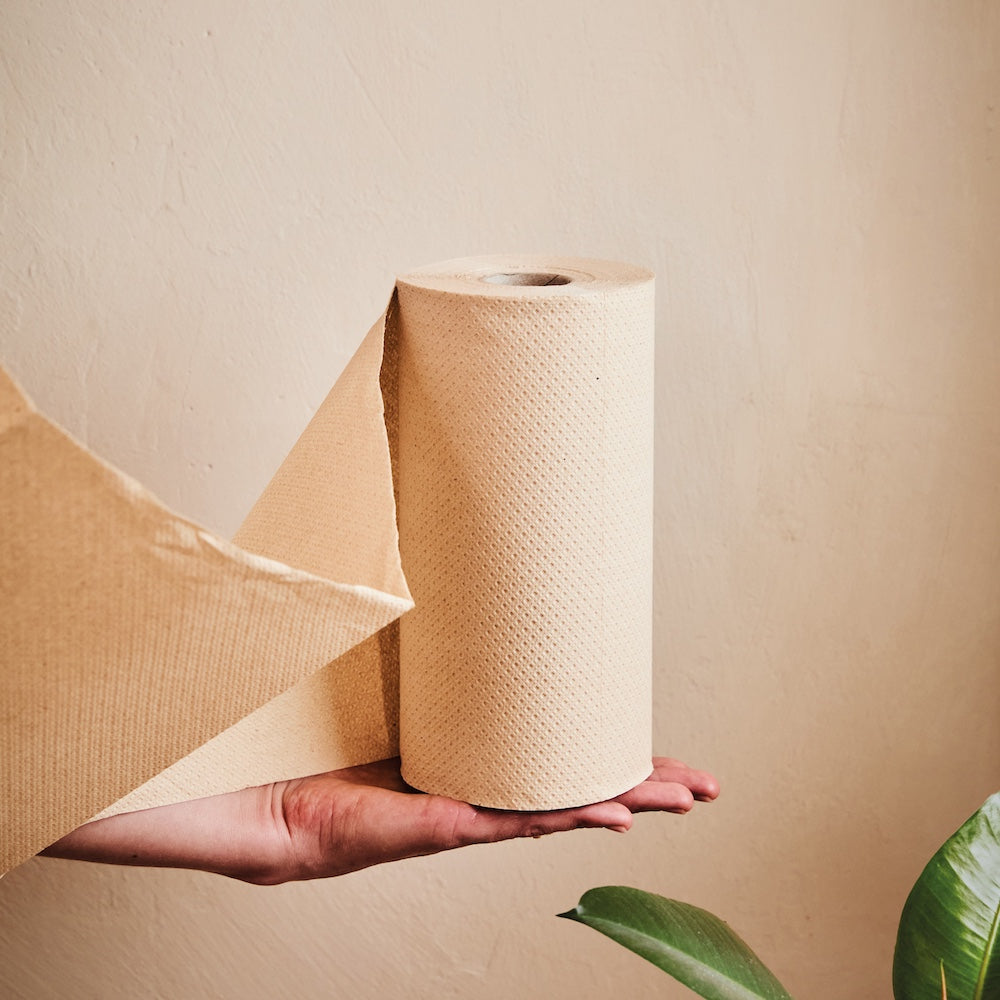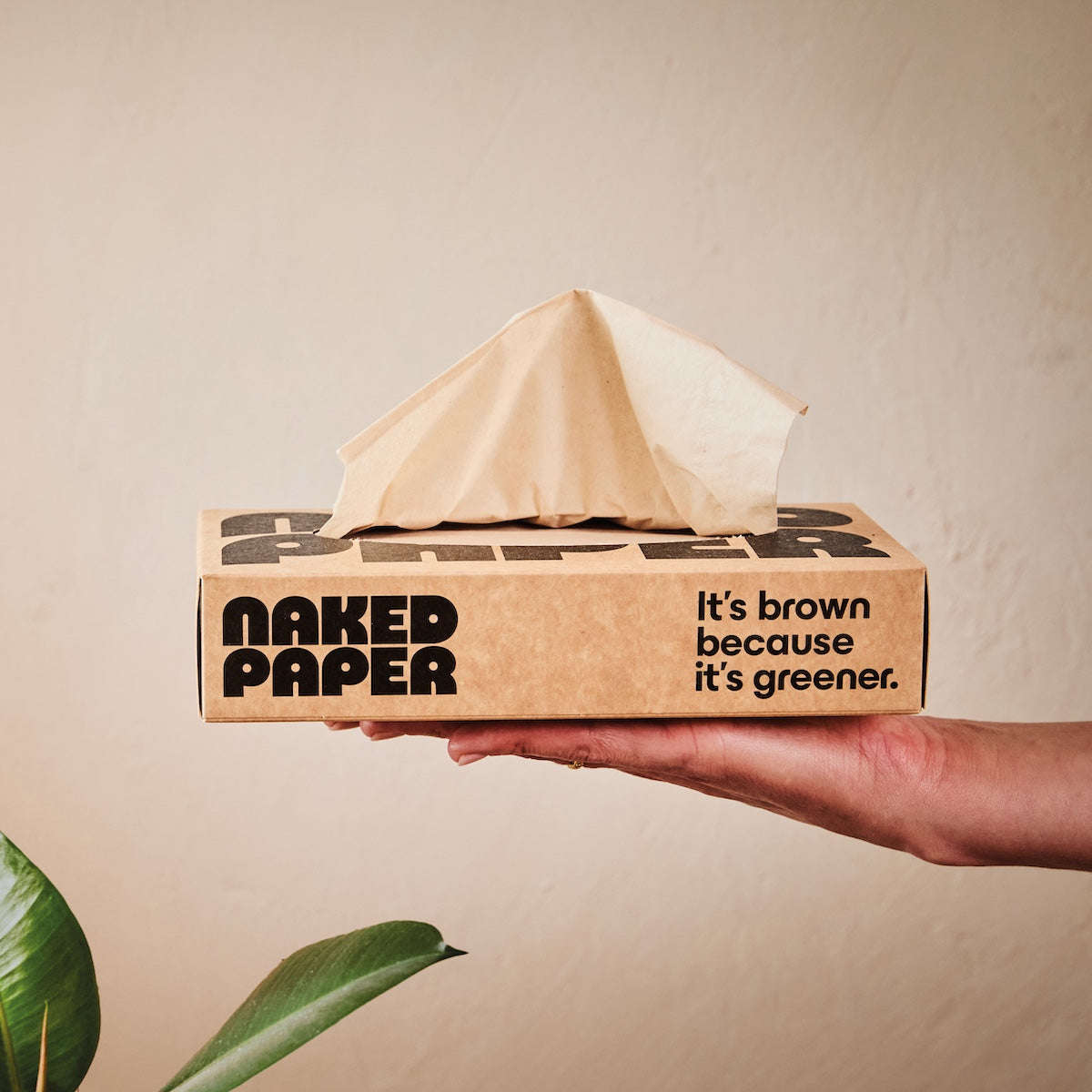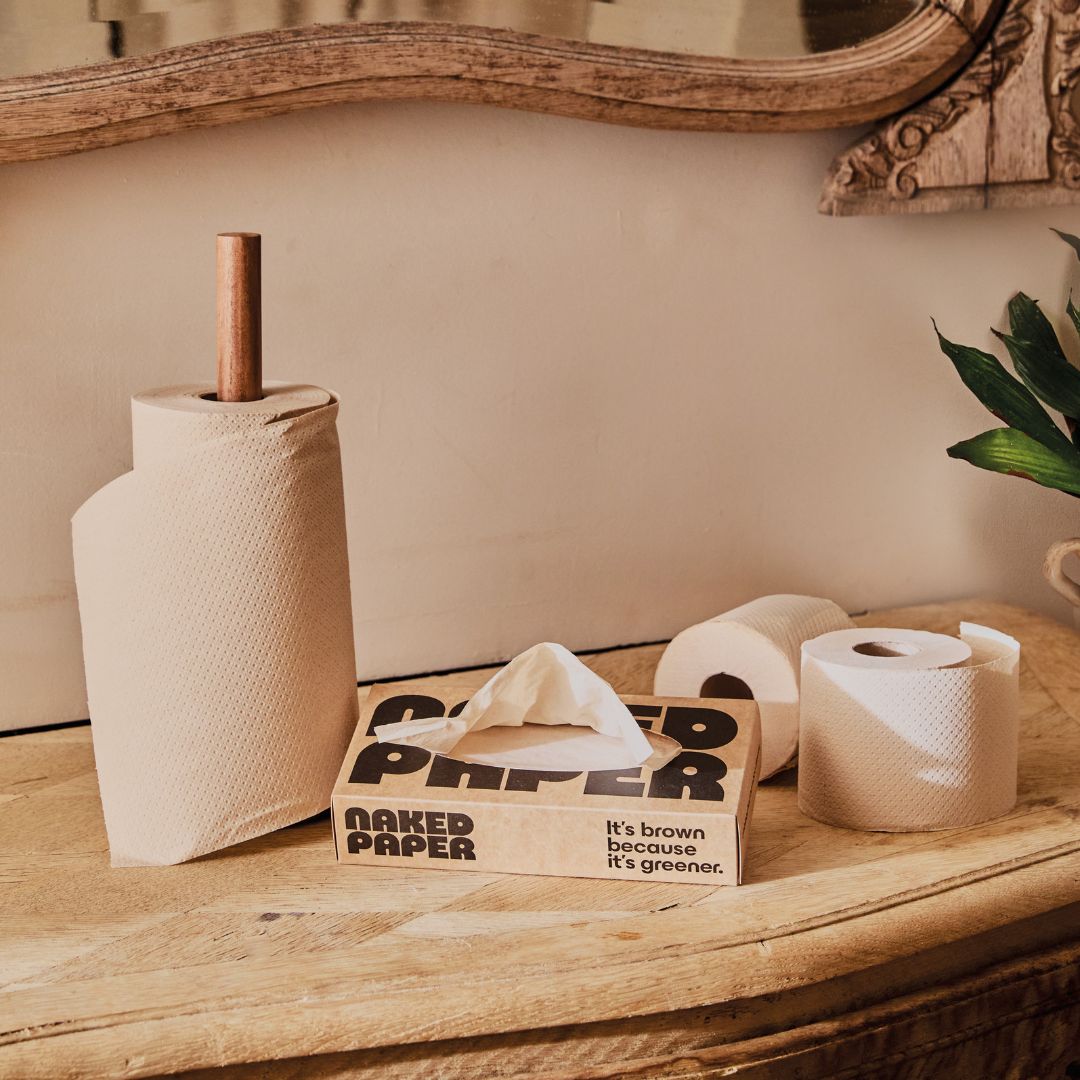Is kitchen roll food safe?

We often describe of our lovely bleach-free Naked Paper kitchen roll as a cleaning marvel. It’s great for soaking up spills, scrubbing a hob, or doubling up as a napkin for the odd spot of sauce.
But it’s also a great aid when we’re preparing food as well, so it’s worth asking if kitchen roll (also known as paper towels) are actually safe to use with food. Whether you’re blotting off bacon, patting dry some freshly-washed salad leaves, or wrapping up a sandwich for lunch, you’d probably like a bit of reassurance that there’s nothing lurking in the roll that’s going to cause you to lose your dinner.
Well, you’re in the right place. Naked Paper kitchen roll is certified as food contact safe, so it’s good for all sorts of daily household tasks. But what does food contact safe really mean? And what should you look out for when using kitchen roll around food?

What does food safe mean?
When it comes to the products designed to store, serve, or help with the preparation of food you’ll see a lot of terms floating around. “Food grade”, “food safe” and “approved for food contact” are all relevant terms but they don’t all mean the same thing, and they aren’t used the same way in every country.
Since we’re talking about safety, we think it’s worth being as clear as possible.
In our case, Naked Paper kitchen roll has been certified as food contact safe. That means an independent certifying body has looked at the materials we use and the way we make our products, and found no concerns that would prevent safe contact with food.
This certification (you can see it on our website here) covers exactly the kinds of things you'd expect; blotting, wrapping, draining, drying. There is an assumption here that contact will be short-term and occasional. That’s not because longer contact is unsafe, but because it’s not how kitchen roll is normally used, and it’s normal use that certification is designed to cover.
Our kitchen rolls are food contact safe, and actually our bleach-free toilet paper is as well! That’s not to say that we’d recommend tearing off a few sheets and eating them, but for everyday contact with food you’ll be absolutely fine.

Are there chemicals in kitchen roll or paper towels?
Right, so our kitchen rolls do qualify as safe for contact with food, but is that really so surprising? What kind of ingredients might you find in kitchen rolls that could cause concern in the first place?
Tissue products are relatively simple to make but there are a few ingredients and additives that are worth knowing about. Here’s what you might come across, and how we handle them when we make Naked Paper.
1. Bleach
Bleach is commonly used in tissue production to make products look bright white. As we’ve discussed before, bleaching doesn’t make the product any more hygienic; it’s purely aesthetic. Virgin fibres like wood or bamboo tend to be a pale brown, while recycled materials are often grey. Whitening them takes extra processing, and this bleaching process can come with unwanted by-products that can damage the environment and even cause health issues.
At Naked Paper we don’t bleach any of our products, including our kitchen rolls. What you see is the natural colour of the cleaned raw materials.
2. Formaldehyde
To be useful for scrubbing and blotting duties; kitchen rolls need to be soft and absorbent, but stay strong enough to hold together when wet. To do this, manufacturers apply coatings or additives to boost wet strength. This is the difference between toilet roll and kitchen roll, if you’re wondering, and it’s one of the reasons why you shouldn’t flush kitchen roll down the loo.
The wet strength coating can be made in a variety of ways, and some contain formaldehyde. Formaldehyde exposure, even at low levels, is a growing health concern in the UK, and the use of this chemical is increasingly regulated.
We don’t use formaldehyde (or any other harsh or toxic chemicals) to make Naked Paper products. The wet strength coating we use on our kitchen rolls is derived from resin, and we stick strictly to ingredients that meet the EU’s REACH chemical safety standards. That means no formaldehyde, and no shortcuts.
3. BPA (Bisphenol A)
BPA is a hormone-disrupting chemical often found in thermal receipts, glossy paper, and other forms of coated paper. Because of this, it can make its way into recycled toilet paper, if the source material used isn’t properly controlled.
We’ve talked about BPA in more depth in a previous post, but in short: the recycled materials we use for both our toilet paper and kitchen rolls does not contain BPA. We haven’t done specific BPA testing on our kitchen rolls yet, but they use exactly the same raw materials as our toilet paper, and our toilet paper has been tested independently and certified BPA-free.

How to tell if kitchen roll is food safe
That’s what can end up in kitchen rolls, and why they’re not in Naked Paper kitchen roll.
But lets say (horror of horrors) you don’t have any of our lovely bleach-free sheets to hand. How do you know if your paper towels are good to go for food contact? Here’s some green flags to look out for.
-
Independent certifications: Certification from bodies like ISEGA (in Europe) or the FDA (in the US) means the product has been investigated specifically for food contact safety.
-
Check for what they don’t have: If the brand is open about using unbleached materials, avoiding BPA, and steering clear of harsh chemicals, that’s a good sign.
-
Ask! If you’re going to be using kitchen rolls or paper towels for daily kitchen tasks, it’s not too much to ask for them to be safe to use in contact with food. If you don’t see any detail about this on the packaging itself or on the company website, it’s worth getting in touch to ask.

Naked Paper kitchen roll: sustainable paper towel that's certified food contact safe
We make our kitchen rolls with the same principles as our toilet paper and facial tissues. Simple materials, responsible choices, no added nonsense.
They’re made from recycled cardboard and packing paper; without bleach, dyes, or harsh chemicals. They’re tested to be BPA-free, and we don’t use formaldehyde or any ingredients that don’t meet strict EU safety regulations.
And they’re certified food contact safe, so you can use them to pat, wrap, and wipe with confidence.
Want to try them for yourself?
Recent blog posts
-

Our footprint stage three: transport and waste management
This is the third part of our series breaking down the full, cradle-to-grave, emissions of making Naked Paper*. In part one we covered the CO2e involved in the production and transportation of our raw materials, and in part two we...
-

Our footprint stage two: manufacturing
From root to roll, we're diving into the detail of our climate footprint* to show how we make toilet paper (and kitchen rolls, and tissues) with a much lower climate footprint than the standard. Last time we covered our raw...
-

Our footprint stage one: raw materials
People are often interested to learn more about how we make Naked Paper, and the CO2e emissions* involved at every stage. So we're breaking it all down, from root to roll, starting with our raw materials and how they get...








